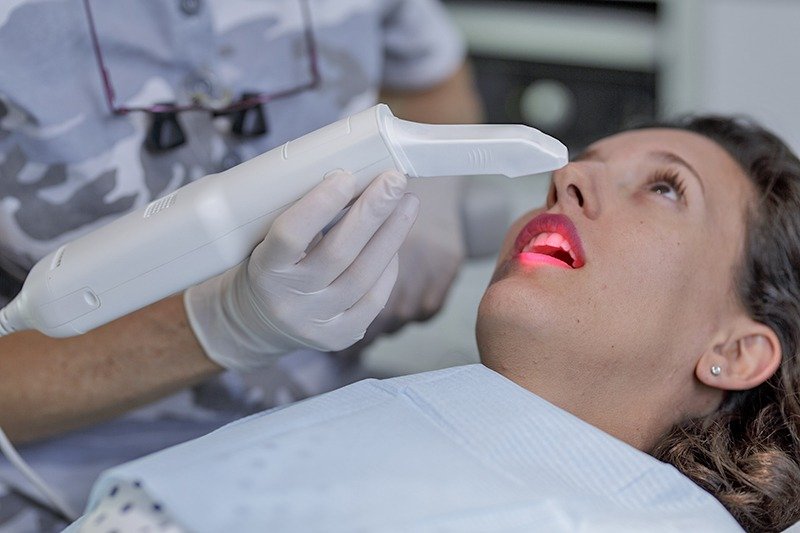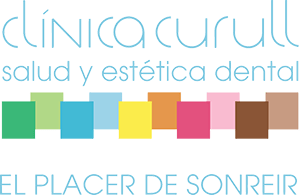It is a technique that allows to recover the shape, aesthetics and function of a tooth that is damaged. It consists of applying an adhesive to the area to be treated and, after it has dried, the specialist adds layers of resin or composite to give it shape, and then proceeds to polish it to give a completely natural appearance. The result is a coverage without difference with the contiguous dental piece and improves the overall aesthetics of the dentition.
Through restorative dentistry it is possible to repair small dental imperfections that spoil the smile. We are talking, for example, about broken teeth, cracks, cavities or aesthetic defects such as color changes.

The smile is the ideal complement to beautify the face
Smiling is a healthy and complete exercise that releases the hormones called “happiness” generating an increase in well-being and a decrease in stress.
When we show good teeth when we smile, without stains, cavities or damaged teeth, we attract looks, which improves our self-esteem and our personal relationships.
For this reason, it is important to take care of our smile, first with good prevention, then with adequate treatments offered by restorative dentistry and finally with correct maintenance of the actions.
At Clínica Curull we are committed to minimally invasive restorative dentistry to treat cavities or change old or bad fillings. We use adhesive techniques with state-of-the-art materials, which allow us to preserve the remaining dental tissue as much as possible and restore lost dental function and aesthetics, mimicking the natural dentition.
Restoration of dental pieces
It is a procedure that does not usually require anesthesia and is suitable for all types of pieces. The resin that is used is pigmented until the closest shade to the original tooth is achieved.
Once the treatment is finished, the patient does not require special care, although it is advisable to avoid biting or chewing food that is too hard, since the adhesive does not have the hardness of the natural piece.
The duration of the dental restoration will depend on the oral health and habits of the person treated, although it usually takes several years before any touch-up is required.
We treat cavities and root canals meticulously:
- Non-invasive techniques.
- adhesive systems.
- Respect for the natural dentition.
Make an appointment at our dental clinic and learn about our restorative dentistry techniques!
Call us
Frequent Questions
What is the dental caries?
Dental caries is an infectious disease that occurs due to the demineralization of the teeth, caused by the acids resulting from the bacterial plaque. It affects the hard tissues of dental pieces such as dentin and enamel. Although it is an infection that can start from the surface of the tooth, it can spread and also affect the pulp. Caries cause permanent damage, causing the softening of the dental piece and can evolve towards the appearance of cavities, that is, openings or holes in the teeth.
What is the cause of dental caries?
Dental caries is associated with poor oral hygiene, such as errors in brushing techniques and absence of dental floss, a predisposing genetic etiology, the influence of salivary pH, and a diet rich in sugars.
It is the interaction between the host (the colonizing bacteria), the substrate (the tooth), and the time factor that will favor the development of caries.
What causes dental caries?
Dental caries causes the destruction of dental tissues. After the destruction of the enamel, it attacks the dentin until it reaches the dental pulp (the nerve of the tooth) producing its inflammation, pulpitis, and subsequent necrosis (pulp death), which requires to be treated by endodontics or devitalization of the nerve.
Caries is the leading cause of tooth loss in young people.
Why treat dental caries?
Over time, caries can reach deep and into the pulp of the tooth, causing severe pain and sensitivity to hot and cold. At this point, it is most likely that a root canal is needed, that is, the removal of the dental pulp. Once the nerve has been treated, the tooth can be reconstructed using a resin or ceramic inlay. In the event that the dental piece is severely destroyed, a crown must be placed.
How to prevent dental caries?
Oral hygiene is necessary to prevent caries and consists of an adequate dental brushing technique, at least twice a day, preferably after each meal and before going to bed. We also recommend using dental floss or interproximal brushes once a day and rinsing with fluoride or other antiseptics if required.
In addition, a rigorous examination of the oral cavity by the dentist and a thorough oral cleaning at least once a year are important.
We also recommend maintaining a healthy and balanced diet avoiding sticky foods, sugary drinks or constantly sucking on candies.
What restorative treatments exist in dentistry?
There are different types of dental restoration:
- Dental fillings: their function is to stop the decay process.
- Crowns: used to restore the appearance and functionality of a damaged or badly worn tooth.
- Bridges: are fixed partial prostheses that replace one or more missing teeth. To make use of them it is necessary to have healthy teeth on both sides of the empty space.
- Dental implants: procedure that aims to replace the roots of missing teeth through the use of titanium screws that will be integrated into the maxillary bones and will support the crowns.
It is worth mentioning that it is the professional who will determine the most pertinent treatment taking into account the patient’s dental health and the desired appearance.
What materials are used for dental restoration?
For the restoration of teeth that suffer from aesthetic damage, fillings or dental fillings are used, which can be made of silver amalgam, resin or composite, porcelain, gold, among other materials. However, resin or composite fillings are the most frequent since they have the same color as natural teeth. Crowns or caps can also be used for teeth that have suffered further destruction. The crowns can be made of ceramic, zirconium or composite resin, and in some cases they will have metal inside. At Clínica Curull we prefer to make metal-free crowns to avoid those dark halos around the gums that tend to appear over time.
Our patients Say
Testimonials






